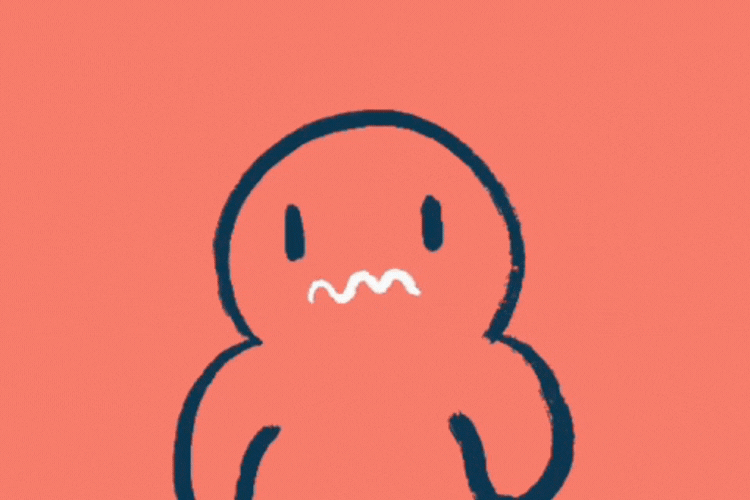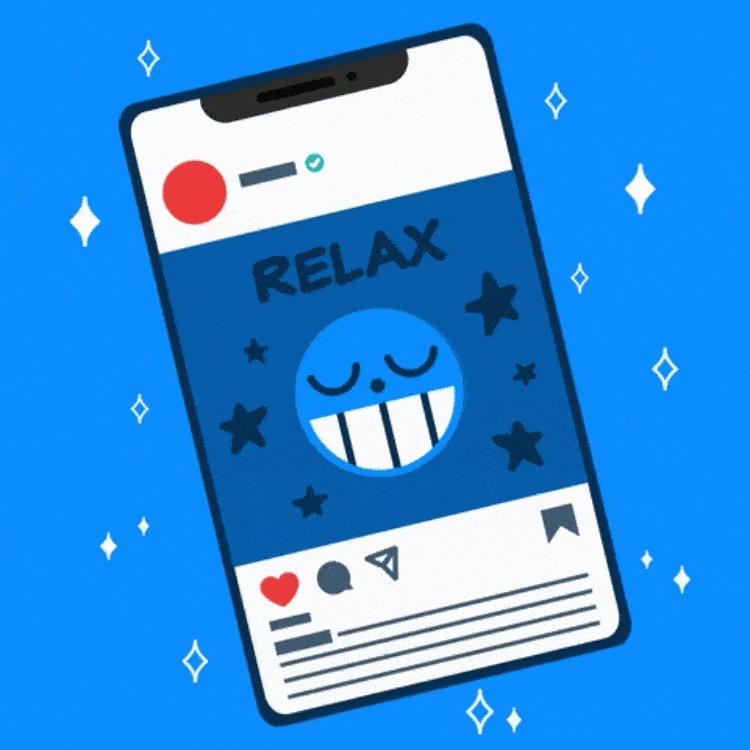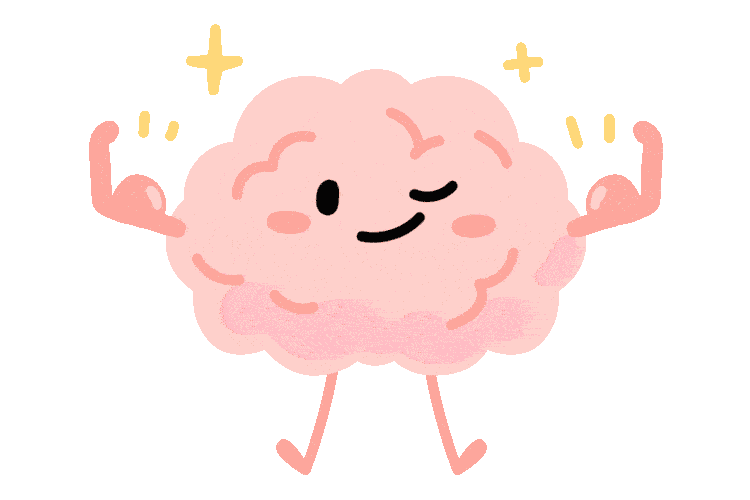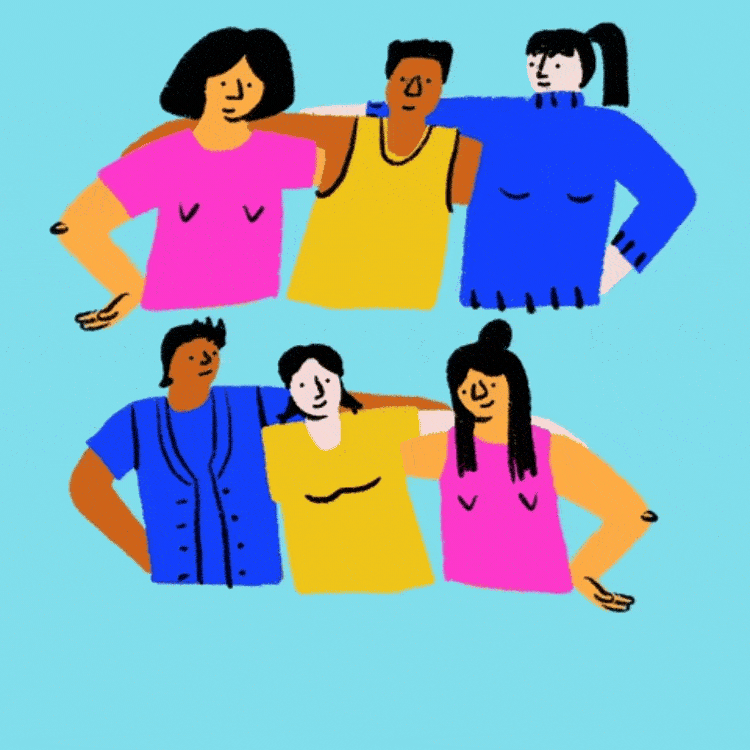Calm Minds: A Guide to Easing Anxiety
Feeling a little stressed is perfectly normal, but how do you know when that stress has turned into something more serious?
If you’re like a lot of teens, you may feel like you’re juggling everything at once—schoolwork, exams, responsibilities at home, and maybe some drama with friends. You might even have sports, clubs, a job, or other things on your mind. You may be worried about what you’ll do after high school. It’s a lot for anyone to deal with!
Read on to learn the differences between stress, worry, and anxiety and find out how to cope with these very common situations.
- How is anxiety different from stress and worry?
- What are the signs of anxiety?
- What is the "fight or flight" response?
- How do I manage everyday stress?
- Self-Care, Mindfulness, and Journaling Apps
- Anxiety Treatments
- Mental Health Resources

What Am I Feeling?
We often hear similar terms thrown around to describe unpleasant feelings we have when we’re overwhelmed. Do you ever wonder what “anxiety” really means and how it is different from stress or worry? Let’s break that down.
STRESS is your body’s natural, short-term reaction to something overwhelming or difficult, like a big test or an unfamiliar situation. Having some stress is normal and can even help you stay alert and focused when you need to be. However, if you have gone through a traumatic event, it can lead to Post-Traumatic Stress Disorder or other trauma- and stressor-related disorders for some people. In these cases, professional help can make a positive difference.
WORRY is that nagging thought in the back of your mind about what might happen in the future. You might worry about your grade in a class, a big social event or date, or whether you’ll get into the college you want. Some worries can be helpful by getting you to focus on solving problems you are facing.
ANXIETY can involve both stress and worry, and it takes things up a notch. It’s when worries feel like they’re taking over and are hard to stop, making it hard to concentrate, do the things you need to do, or even sleep. When you have an anxiety disorder, those thoughts don’t go away and can negatively impact your everyday life and your ability to function. These are some of the most common anxiety disorders:
- Generalized anxiety disorder: Excessive worry (not just occasional worrying) about multiple things, like performance in school or sports or relationships with family or friends. This could include excessive worry about your health or the health of loved ones. This is an ongoing experience of frequent anxiety or fear that may last for months.
- Social anxiety disorder: Extreme fear and worry about social situations where you might be judged, embarrassed, or rejected. People with social anxiety disorder may avoid social situations like school or work.
- Panic disorder: Frequent and unexpected panic attacks (overwhelming fear that can last for several minutes with no apparent reason). People with panic disorder worry about having another panic attack—attacks can happen as often as several times a day, or just a few times a year. They may start trying to avoid situations where panic attacks have happened in the past, which can get in the way of living full lives.
- Phobias: Intense fears of specific objects or situations (like fear of heights or spiders). A phobia can make people avoid certain behaviors out of fear of encountering what they are afraid of.

If you struggle with anxiety, you’re not alone. Anxiety is one of the most common mental health challenges among teens. In fact, about 1 in 3 teens has an anxiety disorder at some point in their lives.

What are the Signs of Anxiety?
Anxiety can cause a whirlwind of emotions and even physical symptoms in your body:
- Pounding or racing heart
- Sweating
- Trembling
- Chest pain
- Stomach ache or nausea
- Trouble sleeping
- Tense muscles
- Feeling irritable, restless or on edge
- Getting tired easily
- Difficulty concentrating
Anxiety Explained: A Peek Inside the Brain
When you’re feeling anxious, specific parts of your brain kick into high gear. These are the same parts that help you sense and react to danger by triggering the "Fight or Flight” response. This is a good thing if there’s a real danger, but it’s a problem if your brain gets carried away and gets in the habit of sensing danger when it’s not really there.

A part of your brain called the prefrontal cortex is in charge of logical thinking, planning, and decision-making. It also helps regulate your emotions. Did you know that this part of your brain isn’t fully developed until your mid-to-late 20s? This can make it a bit tricky for teens to control anxious feelings.
There are also mood chemicals in your brain called serotonin and dopamine. Sometimes, they might not be in perfect balance, which can make you feel more anxious. Understanding how all these factors work together helps mental health professionals find ways to support teens and others when they have anxiety. Here are 6 Facts You May Not Know about your amazing brain.
Managing Everyday Stress and Worries
Small actions that you take every day can help you care for your mental health and ward off anxiety. Take a look at 8 Healthy Habits for a Mindful Life and use them as a starting place for your mindfulness and self-care journey. Look at the list below. How many of these activities do you already practice? Which can you add?

- Identify negative thoughts and challenge them. Pay attention to your thoughts when you feel anxious. Write them down and try to identify any negative or unrealistic patterns. Ask yourself if there is evidence supporting these thoughts. Replace negative thoughts with positive ones. Challenge your inner critic by treating yourself with kindness.
- Practice mindfulness and relaxation techniques. Practice mindfulness by focusing on your breathing or senses. Try progressive muscle relaxation or guided imagery to calm your mind. Practice deep, slow breathing when you feel anxious. Try the 4-7-8 breathing technique: inhale for 4 seconds, hold for 7, and exhale for 8.
- Set a specific time to think about problems that are on your mind and come up with potential solutions. Write down your thoughts. When the time is up, redirect your mind to other things. This will make it easier to keep the worrisome thoughts off your mind when you need to focus on other things.
- Set realistic goals and manage your time. Break down big tasks into smaller, manageable goals and celebrate your achievements, no matter how small. Create a schedule to organize your time, prioritize tasks, and set realistic deadlines to reduce stress.
- Keep moving. Participate in activities you enjoy. Regular exercise can positively impact your mood.
- Start a gratitude journal. Write down three things you're grateful for each day. You can shift your perspective by focusing on positive aspects of your life.
- Start a consistent self-care routine. Ensure you're getting enough sleep, eating well, and taking breaks.
- Learn to say no. Don't overcommit yourself. It's okay to say no to new responsibilities when you feel overwhelmed.
- Reduce your consumption of caffeine. Some people are more sensitive than others to the effects of caffeine, and too much of it can contribute to health problems, including anxiety. Consider having fewer caffeinated drinks.
- Visualize positive outcomes. Picture yourself successfully facing and overcoming challenges.
Technology can help!

Technology can be a powerful tool for boosting your mental health if you use it carefully. Take social media, for example. It has many positive benefits—like staying connected with friends, growing your support network, and having an outlet to express yourself. The trick is to use it in a healthy way. This means following accounts that inspire you, inform you, or just make you happy. It also means not following or unfollowing accounts that have negative content or make you feel bad or anxious and setting limits on how much time you spend online. To find out how social media affects your life and mental health and get tips for creating healthy habits, take the Mental Health and Social Media quiz.
You can also take advantage of various apps that are available to track and support your mental well-being:
- Happify (Free, users must be ages 18+)
- Mindshift CBT (Free, users must be ages 18+)
- Finch: Self-Care Pet (Free, all ages)
- Smiling Mind (Free, for users ages 18+)
- Healthy Minds Program (Free, all ages)
- How We Feel (Free, for users ages 18+)
- Three Good Things (all ages)
- Moodtrack Diary (Free, for users ages 12+)
- Journal (Default iPhone app for iPhone users with the latest iOS)
You can ask a healthcare provider for more recommendations. When you find an app that works for you, use it regularly. Consistency is key!
Whether you’re using social media or a mental health app, be mindful of how much personal information you’re sharing and take steps to protect your privacy. Be mindful of having a healthy balance between screen time and time offline.
Treating Anxiety

Anxiety can be difficult to deal with alone. If you think you might have an anxiety disorder, it’s important to talk with a parent, guardian, or other trusted adult such as an extended family member or family friend, teacher, school nurse, guidance counselor, coach, or a community or faith leader you trust. They can help you find a healthcare provider who can help with diagnosis and find the best treatment plan for you.
The good news is that all types of anxiety are treatable! Anxiety is typically treated with psychotherapy (also called talk therapy or counseling), prescribed medications, or a combination of these.
Psychotherapy can help you cope with negative thoughts, feelings, and behaviors. It involves having a conversation with a licensed mental health professional, such as a psychiatrist, or participating in a group session with other patients. Common types of psychotherapy and techniques used to treat anxiety disorders include:
- Cognitive Behavioral Therapy (CBT) can help you become aware of patterns of negative thinking and change them. It could also involve relaxation exercises and imagery or exposure to activities and situations that worry you, which can help you stop avoiding things you want to do.
- Acceptance and Commitment Therapy (ACT) uses strategies such as mindfulness and goal setting to reduce discomfort and anxiety.
When you’re seeking a mental health professional, take the time to do some research and find one who you're comfortable with!
Medications, which can only be prescribed by a healthcare provider, can help relieve some of the symptoms of anxiety. Common medications prescribed for anxiety include the following:
- Antidepressants: Reduce symptoms of anxiety by increasing the levels of chemicals that control your mood.
- Anti-anxiety medications: Reduce symptoms of anxiety, panic attacks, and worry. These can be addictive, so providers may only prescribe these for a short time.
- Beta-blockers: Reduce physical symptoms of anxiety, such as shaking or trembling.
Your healthcare provider may try several types of medications to find the right one for you. When taking any medication, it’s important to follow your provider’s instructions on how much and how often you should be taking them. They can have negative side effects if taken incorrectly.
- 988 Suicide & Crisis Hotline: Provides 24/7, free and confidential support for people in distress.
- The Trevor Project: Call 866-488-7386 or text 678678 for 24/7 free and confidential support for LGBTQ youth. The Trevor Project provides trained counselors for young people in crisis, feeling suicidal, or in need of a safe and judgment-free place to talk.
- The YouthLine: A free 24-hour crisis, support, and helpline for youth.
- Your Life Your Voice: A teen-to-teen youth crisis and support service.
- Find a Psychologist: Find a healthcare provider.
- FindTreatment.gov: Find treatment for mental and substance use disorders.
- SAMHSA’s National Treatment Referral Routing Service: Call 800-662-4357 (800-662-HELP), text your ZIP code to 435748 (HELP4U), or use TTY: 800-487-4889 for free, confidential, 24/7 treatment referrals and information services (in English and Spanish) for individuals and families facing mental or substance use disorders.
- CDC: Coping with Stress
- National Institute of Mental Health: Mental Health Minute: Stress and Anxiety in Adolescents (video)
- National Institute of Mental Health: My Mental Health: Do I Need Help?
- SAMHSA: How to Cope
- SAMHSA: Understanding Anxiety Disorders Young Adult: Get the Facts.

